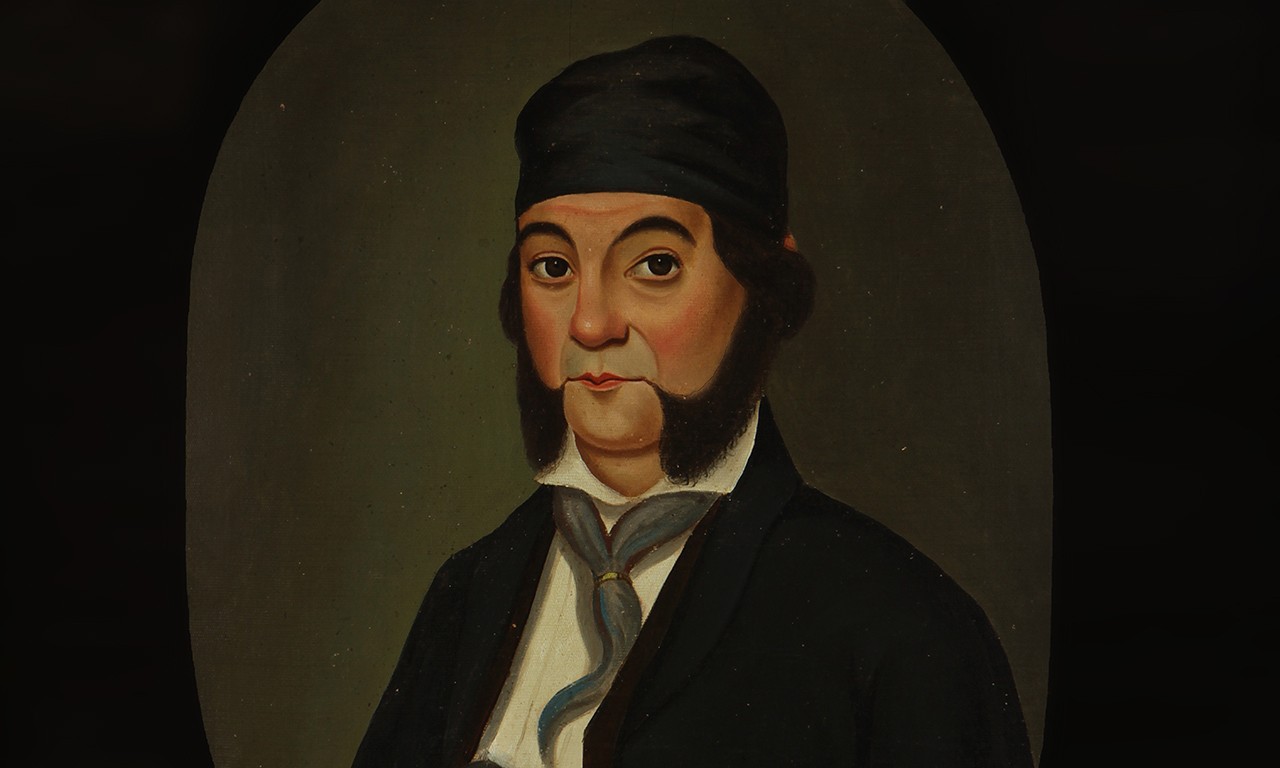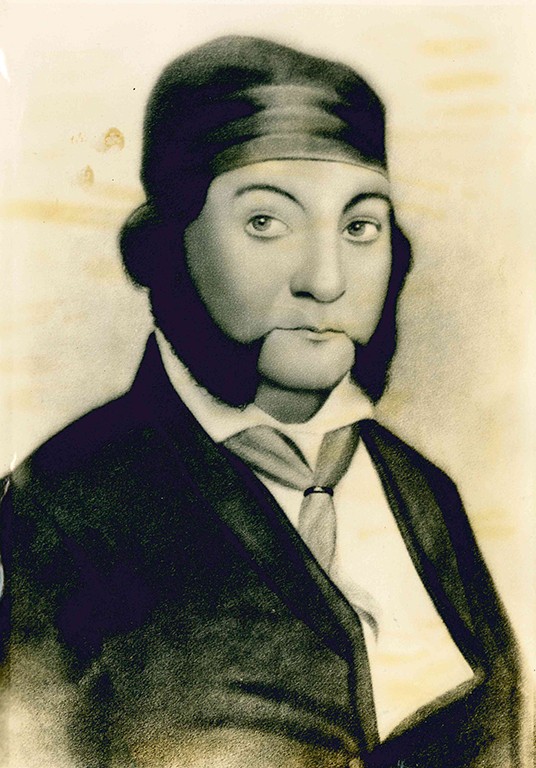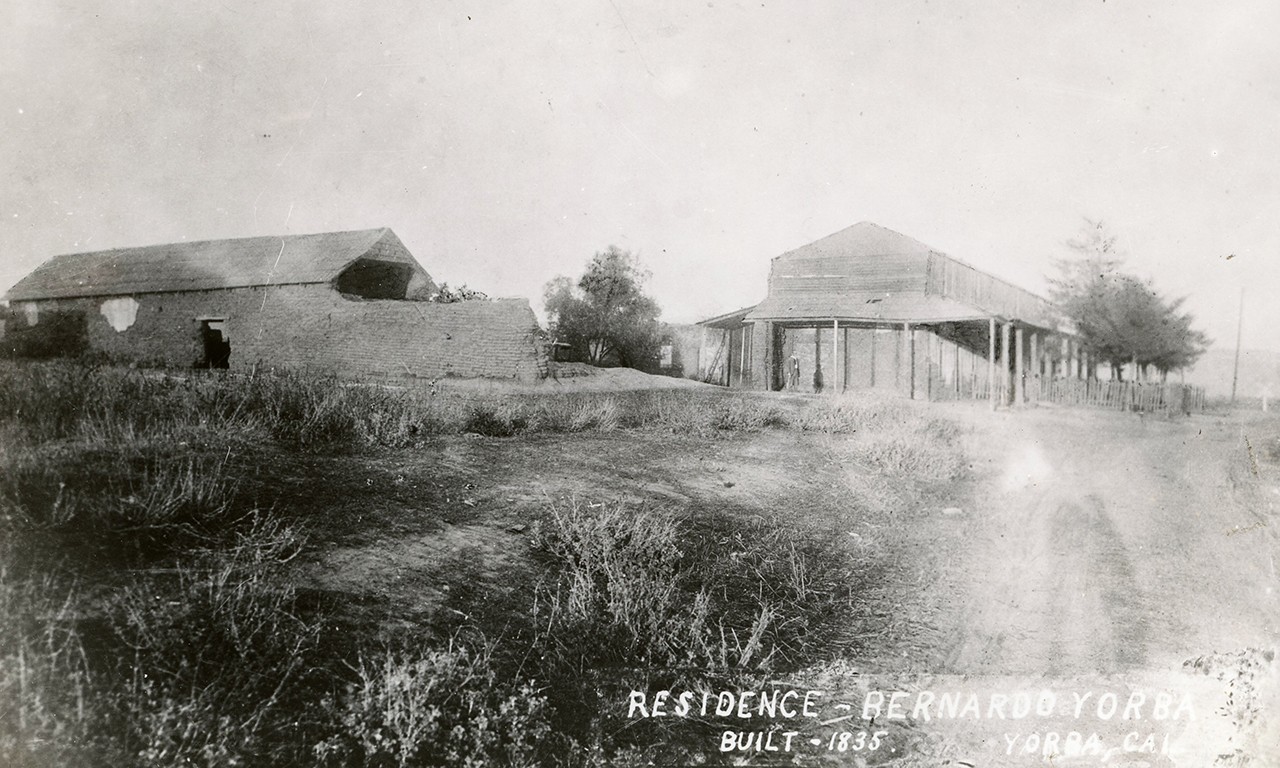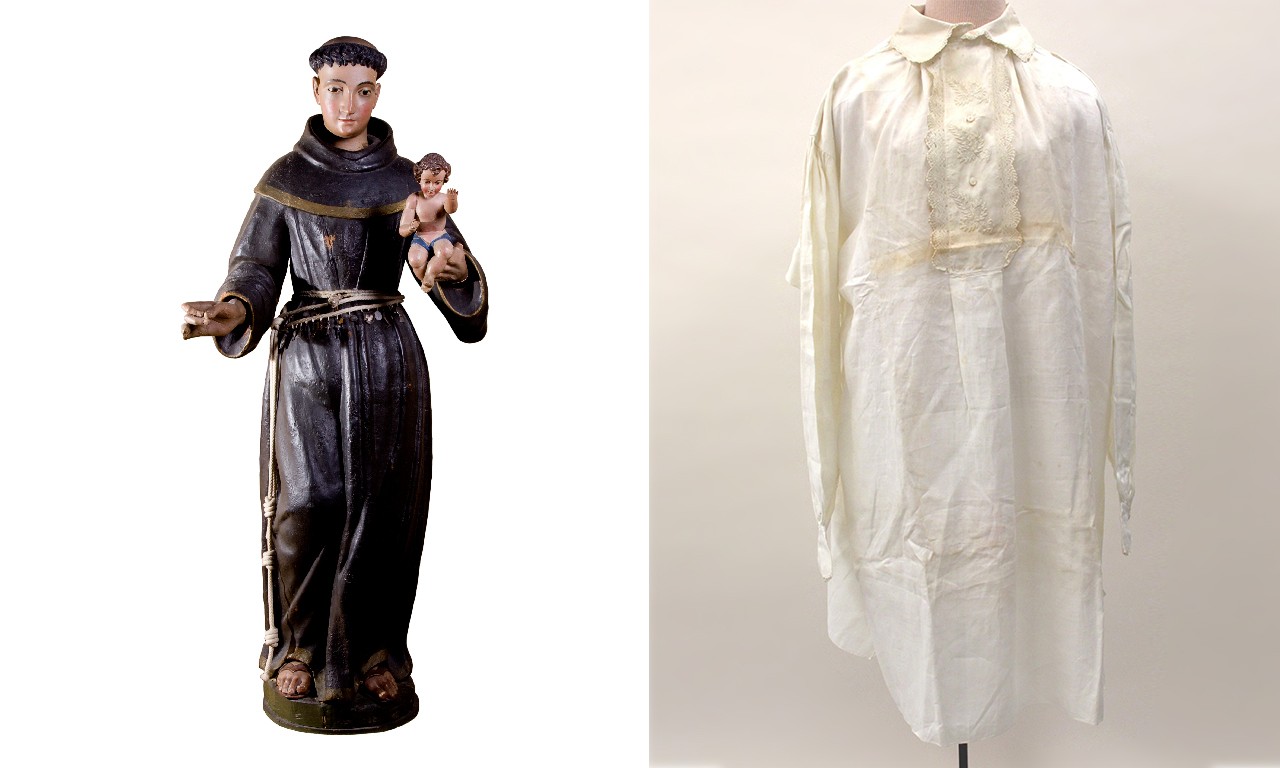2002 North Main Street
Santa Ana, California 92706
TEL: 714.567.3600
Shared Likeness: Portraits of Don Bernardo Yorba
 |
| Portrait of Don Bernardo Yorba, c. 1850 Henri Pénelon (French, 1827-1885) Oil on canvas, gilt frame; 24 ½ x 19 ¾ x 1 ¼ in. 5070 Gift of Mrs. Herman Locke and Bernardo Marcus Yorba, Jr. |
Lasting Legacy
It is important to remember that especially in California the first Hispanic Americans did not immigrate to the country, but already lived here when Mexico ceded Alta California to the United States in 1848. Of the great family names that streets and cities in California still bear to this day, perhaps few among them are more important than Yorba, after whom the city of Yorba Linda is named. As we continue into Hispanic Heritage Month and look at artworks by and of important Americans of Hispanic descent, this week’s post features not one but two near identical paintings of Don Bernardo Yorba.
 |
| Copy of a Don Bernardo Yorba Portrait, 1940-1944 Henri Pénelon (French, 1827-1885) Paper and ink; 11 × 8 1/2 in. 6255f Terry E. Stephenson Collection |
Cheaper by the Baker’s Dozen
The first Yorba into California was José Antonio Yorba, a Spanish solider who signed on with the first Portola expedition of what would eventually become the state. While stationed in the presidio in San Francisco he met and fell in love with the daughter of an officer, Maria Josefa Grijalva. The two married and had fourteen children together with nine surviving to adulthood. Bernardo Antonio Yorba was the seventh youngest of the nine and became by far the most successful. It is largely because of his exploits that Yorba is still such an important name in Southern California. Young Bernardo was taught by Franciscan padres at a young age. With some good fortune, José Antonio Yorba inherited his father-in-law’s land grant of the Rancho Santiago de Santa Ana, which now constitutes a large part of modern-day central Orange County. Around 1810 the Yorba family moved to live on the land grant. Bernardo spent a lot of his childhood and early adulthood there, marrying his first wife, Maria de Jesus Alvarado Yorba at the age of 19. Bernardo Yorba had the unfortunate distinction of being twice a widower.
 |
| Don Bernardo Yorba Rancho, early 20th Century Yorba Linda, California Photographic print 6753 Terry E. Stephenson Collection |
Becoming Don
Three children into his second marriage, Bernardo Yorba demonstrated his work ethic above and beyond his siblings by applying for his own land grant. When it was awarded by the Mexican governor of Alta California in 1834, Yorba got to work developing his new 13,000-acre tract of land which in rough terms now goes by the name Yorba Linda. The land was primarily used for raising cattle and horses, though different plots were irrigated with water from the Santa Ana river to grow a variety of different crops including corn, beans, and wheat. Don Bernardo grew very wealthy from the way he worked the land, and his two-story adobe homestead and surrounding property grew practically into a town of its own with leatherworkers, smiths, jewelers and around 1,000 ranch and farm hands. He had strong lines of trade built that allowed for silks and ornate wooden chests from Asia to be common sights around his household. More even than that he was described as a kind man, who was beloved by his workers and fifteen children.
 |
|
| Statue of Saint Anthony of Padua, c. 1800 Made in Mexico; used in California Wood, gesso, paint, cloth, glass and silver; 64 in. 20786 Gift of Rosita Yorba Locke |
Pajamas of Don Bernardo Yorba, 1809 Unknown Maker; Alta California or Mexico Linen; 39 x 25 in. 5074 Gift of Martina Lepida Yorba de Pelanconi |
A Tale of Two Portraits
The Bowers Museum ended up with a lot of objects from the life of Don Bernardo, including his personal pajamas and a statue of St. Anthony which was once prominently displayed in the rancho’s chapel. Perhaps the most important artifact from his life, however, is a painting of Yorba on display in California Bounty. It shows him garbed in black, with impressive sideburns gently narrowing to meet the sides of his mouth. After a significant time focusing on other areas of our collections, in 2016 when curating the exhibition Bowers staff was surprised to rediscover that we have an almost identical portrait of Don Bernardo. The two differ only ever so slightly with the painting currently on display showing Yorba to have a trimmer figure than the one in storage.
|
|
|
| Portrait of Don Bernardo Yorba, c. 1850 Henri Pénelon (French, 1827-1885) Oil on canvas, gilt frame; 24 ½ x 19 ¾ x 1 ¼ in. 5070 Gift of Mrs. Herman Locke and Bernardo Marcus Yorba, Jr. |
Don Bernardo Yorba, c. 1850 Henri Pénelon (French, 1827-1885) Oil on canvas; 23 1/4 x 19 3/4 x 1 1/4 in. 5286 Gift of Arnold O. Dominguez |
E Pluribus Unum
Independent research and input by the late Phil Brigandi confirm that it is not just two, but a minimum of three such paintings that were all created with Yorba in the same neckerchiefed pose. As was often the case with portraits made in the middle of the 19th century, rather than having a busy person who had commissioned a portrait sit for hours, many portraits were based off daguerreotypes. The original to this painting was apparently a photograph of Don Bernardo which either no longer exists or is held in a private collection somewhere. In 1850 Henri Joseph Penelon arrived in Los Angeles and set up a daguerreotype and portrait studio. Yorba family history holds that the first portrait of Yorba was based off this and then two more copies were later made by Penelon himself. Though the Bowers does not have the original painting it seems likely that the two in the museum’s possession are the two copies that Penelon made. Yorba lived until 1858, almost a decade after California became a territory of the United States. As an American, Don Bernardo Yorba continued to be a pioneer and pillar of his community and to this day his descendants keep his name and legacy alive through philanthropic programs.
Text and images may be under copyright. Please contact Collection Department for permission to use. References are available on request. Information subject to change upon further research.

Comments